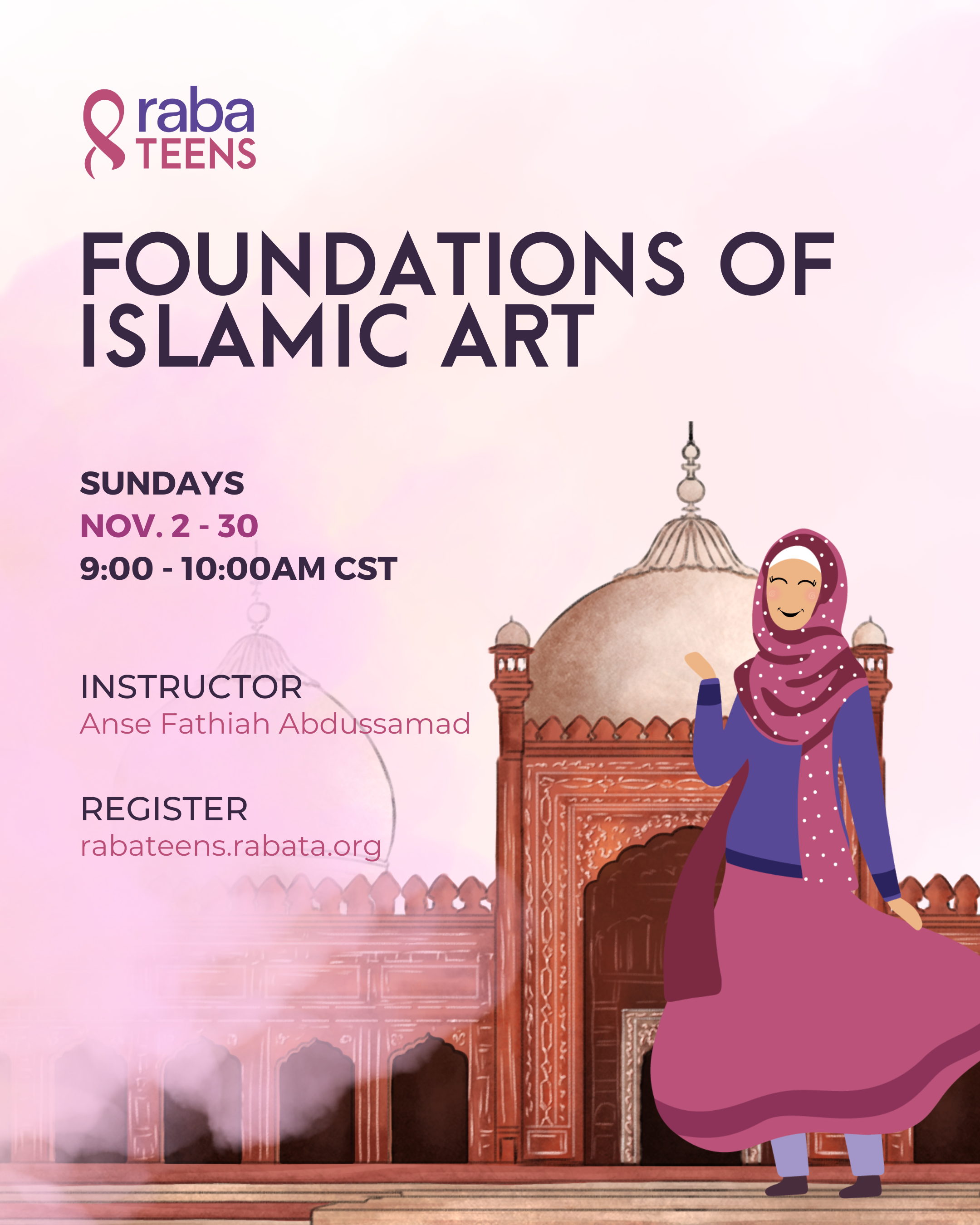Foundations of Islamic Art
Winter 2025
RabaTEENS is a nurturing space for deep and meaningful Islamic spiritual mentorship with compassionate and caring mentors. We design fun, creative, and positive educational experiences to help teens grow confidently and comfortably into their faith.
This Foundations of Islamic Art class will introduce students to three important elements of Islamic art: calligraphy, ornaments/geometric patterns, and techniques of painting and coloring designs. The calligraphy and patterns practiced throughout the course will be inspired by the architecture and artistry of mosques around the world.
The course begins with a focus on the anatomy of Arabic letters, where students will learn to write in the Naskh script using tools that are easily accessible, such as pencils and slanted markers, to emulate traditional calligraphy. From there, students will explore the beauty of Islamic patterns and ornaments, drawing designs influenced by historical mosques. They will also learn the basics of color theory and application in Islamic art, culminating in a final project that combines both calligraphy and patterns into a unique art piece.
Arabic calligraphy is the most fundamental form of Islamic art, revered as the highest visual art in the Islamic world. It has served as the foundation for many other art forms, especially as it has been used to record the Quran and hadith. By engaging with calligraphy, patterns, and color, students will gain a holistic understanding of how these elements come together to form the essence of Islamic art.

Week 1: Calligraphy: Naskh Script
Students will be introduced to the anatomy of Arabic letters using the Naskh script. They will begin practicing with pencils or ballpoint pens and will be guided to write according to the strokes used in Naskh script, the style in which the Quran is commonly written in. Practice will be done on graph-lined paper, which will be provided online and can be printed for use.
Week 2: Calligraphy: Naskh Script (Continued)
Students will continue learning the anatomy of letters in the Naskh script, this time using slanted markers. They will repeat the same exercises from the previous week but with a different tool, allowing them to experience the flow of traditional calligraphy writing as it would be done with a qalam, but in a simpler way with a marker.
Week 3: Islamic Patterns: Arabic Ornaments
This week, the focus will shift from calligraphy to patterns. In this session, students will be introduced to Islamic ornaments and geometric patterns and will practice drawing a selection of designs step by step.
Week 4: Color Theory in Islamic Art
Students will study the role of colors in Islamic art and learn about the meaning and symbolism behind certain colors. They will then practice applying colors to the geometric patterns they created in the previous session, bringing their designs to life through thoughtful use of color.
Week 5: Final Project
In this session, students will combine the calligraphy they have learned in the previous sessions with the Arabic ornaments they have drawn, bringing both together on a single sheet of paper. The calligraphy may feature any word, such as one of the names of Allah, written with the slanted marker provided. Students will then learn how to integrate the calligraphy and patterns to create a cohesive art piece.
2B pencil
Ballpoint pen
Watercolor / Poster Color / Gouache paint
Small paintbrushes
Watercolor paper
Eraser
Ruler
A4 or A3 notebooks for practice (recommended: thick paper notebook, at least 150 gsm)
None
Sundays, 9:00 - 10:00 am CST
Session dates: November 2 - 30
Students must attend Zoom live sessions. Classes are NOT recorded.
*Enrollment into the RabaTEENS program is on a per-student basis. If two (or more) students are planning to attend a class together by sharing a screen, each student will need to enroll for class individually.
**RabaTEENS programs are for girls aged 12-17 ONLY. Students are required to be 12 already in order to join any of RabaTEENS programs.
A certificate of participation will be given to students who complete the class.
No refunds are issued once the session begins.
Meets once a week for one hour (5-week session)
Regular price